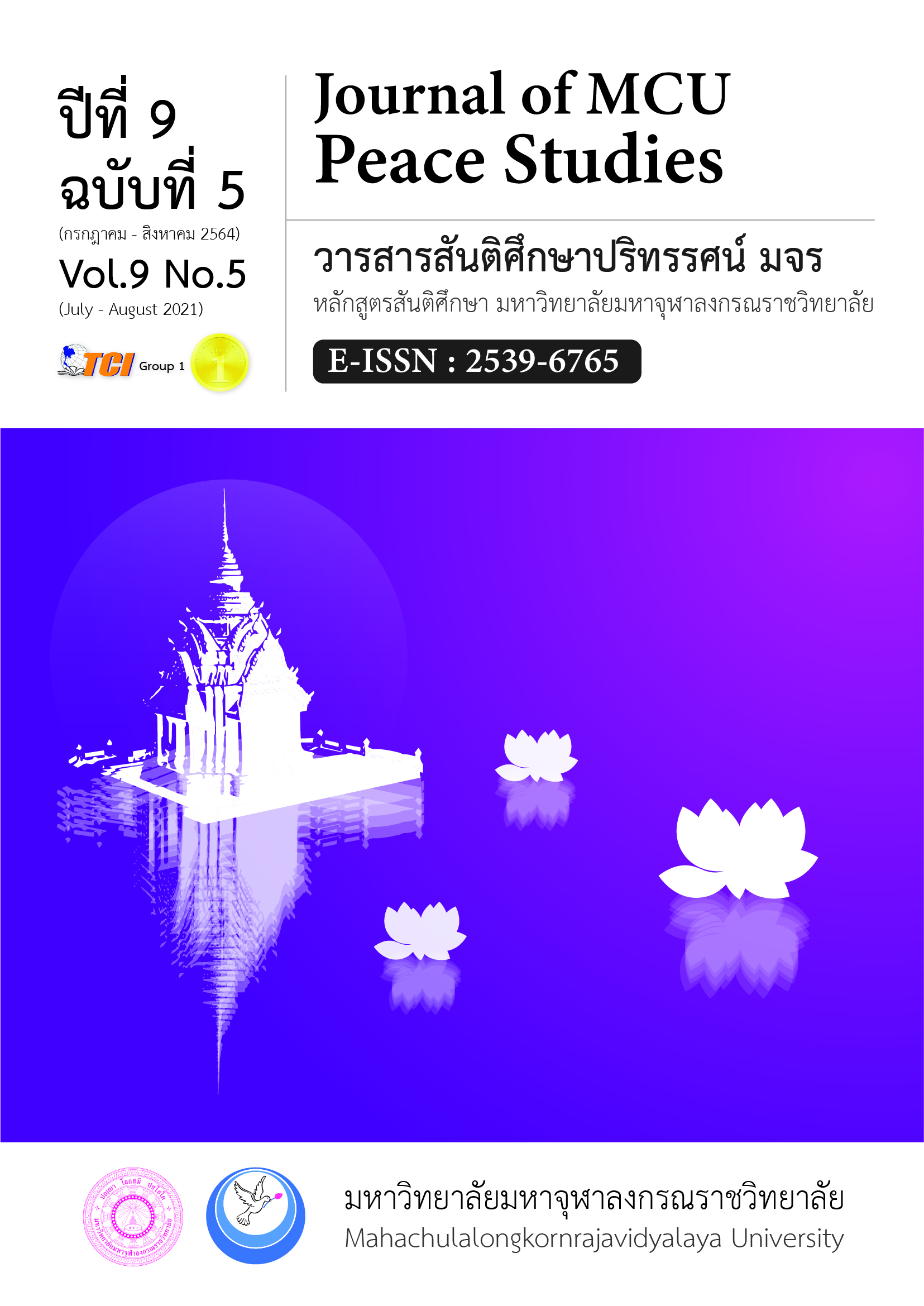ปัจจัยที่มีต่อการเปลี่ยนแปลงจำนวนสามเณรในพระพุทธศาสนา
Main Article Content
บทคัดย่อ
บทความนี้มุ่งศึกษาปัจจัยที่มีต่อการเปลี่ยนแปลงจำนวนของสามเณรในพระพุทธศาสนาของประเทศไทย ผ่านการใช้ตัวแปรที่สะท้อนถึงการพัฒนาหรือการเปลี่ยนแปลงด้านประชากรศาสตร์ สังคม เศรษฐกิจ การศึกษา ศาสนา และเทคโนโลยี โดยใช้การวิเคราะห์ข้อมูล Panel จาก 77 จังหวัดในประเทศไทยที่รวบรวมโดยสำนักงานสถิติแห่งชาติ ระหว่างปี พ.ศ. 2556 – 2560 ด้วยวิธี Fixed Effect Regression Model และวิธี Random Effect Regression Model
ผลการศึกษาพบว่า 1) ปัจจัยด้านการศึกษาที่วัดจากอัตราส่วนจำนวนประชากรเด็กต่อจำนวนโรงเรียน ปัจจัยด้านศาสนาที่วัดจากจำนวนประชากรต่อจำนวนพระภิกษุ และปัจจัยด้านเทคโนโลยีที่วัดจากอัตราส่วนผู้ใช้โทรศัพท์มือถือ มีผลกระทบเชิงลบอย่างมีนัยสำคัญต่อจำนวนสามเณร 2) ปัจจัยด้านประชากรศาสตร์ที่วัดจากจำนวนประชากรเด็กผู้ชาย ปัจจัยด้านสังคมที่วัดจากจำนวนการหย่าร้างและร้อยละของจำนวนประชากรที่อาศัยในเขตเทศบาล มีผลกระทบเชิงบวกอย่างมีนัยสำคัญ และ 3) ปัจจัยด้านเศรษฐกิจที่วัดจากรายได้ประชาชาติที่แท้จริงของจังหวัดต่อหัว มีผลกระทบเชิงลบแต่ไม่มีนัยสำคัญ ผลลัพธ์ที่ได้สามารถนำไปใช้ประโยชน์ต่อการออกนโยบายและกลยุทธ์เพื่อสร้างแรงจูงใจในการบรรพชาสามเณร และเพิ่มคุณภาพของสามเณรของหน่วยงานหรือภาคส่วนที่เกี่ยวข้องต่อไป
Article Details

อนุญาตภายใต้เงื่อนไข Creative Commons Attribution-NonCommercial-NoDerivatives 4.0 International License.
ทัศนะและความคิดเห็นที่ปรากฏในบทความในวารสาร ถือเป็นความรับผิดชอบของผู้เขียนบทความนั้น และไม่ถือเป็นทัศนะและความรับผิดชอบของกองบรรณาธิการ ยินยอมว่าบทความเป็นลิขสิทธิ์ของวารสาร
เอกสารอ้างอิง
Boonnoon, C. (2011). The Decrease of Buddhist Monks, and How it Affects to Buddhism in the Future. Journal of Buddhist Studies Chulalongkorn University, 18(3), 7-29.
Bunnakornkul, W. ( 2019) . Falling of Novices! Less than 500 in 45 years. Retrieved April 18, 2020, from https://www.banmuang.co.th/news/education/145362
Bunsathit, S. ( 1999). The Status, The Roles, and The Problems of Buddhist Novices in Thai Society. (Master’s Thesis). Mahidol University. Bangkok.
Kraipornsak, P. (2016). Econometrics. (1st ed.). Bangkok: Chulalongkorn University Press.
Mourao, P.R. (2006). Why is the Number of Catholic Priest Diminishing in Portugal? Analysis of the Period 1960-2002. Regional and Sectoral Economic Studies, 6(2), 43-56.
_________. (2011). Determinants of the number of Catholic priests to Catholics in Europe – an economic explanation. Review of Religious Research, 52(4), 427–438.
National Statistical Office. (2020). Key Statistical Data. Retrieved March 1, 2020, from http://statbbi.nso.go.th/staticreport/page/sector/th/03.aspx
Office of the National Economic and Social Development Council. (2020). Gross Regional and Provincial Product Chain Volume Measures 2018 Edition. Retrieved March 1, 2020, from https://www.nesdc.go.th/ewt_w3c/main.php?filename=gross_regional
Phramaha Suwit Dhammikamuni, & Homthuanlum, T. (2018). The Motivation for Novice Ordination in Thai Society. Journal of Graduate Studies Review, 14(2), 55-65.
Phramaha Tawee Visaratho. ( 2017) . Buddhist Heirdom Ordination in Theravada Buddhism. Journal of MCU Social Science Review, 6(1), 15-25.
Pinta, P. (2006). Crisis of Decreasing Number of Monks and Novices in Chiang Mai. (Master’s Thesis). Chiang Mai University. Chiang Mai.
Punyasavatsut, A. (2016). Determinants of the Weighted Crime Rate in Thailand. Journal of Economics Business and Management, 4(2), 161-165.
Tamkarn, Y. ( 2014). Home, Temple and School Influence the Use of Sufficiency Economy to Promote Family Strength. Journal of Human Resources Intelligence, 9(1), 12-31.
Tantivechayanon, P. ( 2016) . Buddhist Methods Develop Ruined Temples in Thailand to be Brilliant Temples. Journal of MCU Social Development, 1(2), 9-19.


